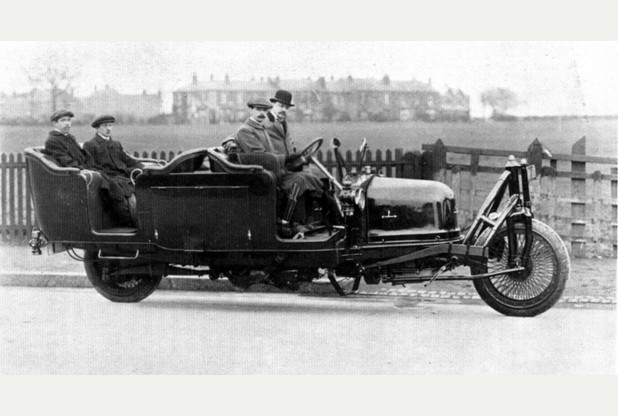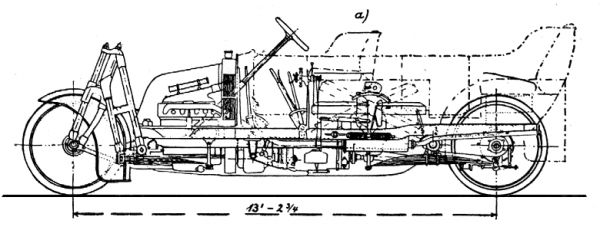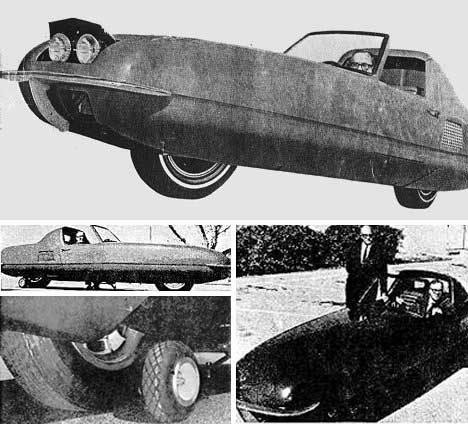
In 1911, the concept for the gyrocar was suggested in a fictional story called “Two Boys in a Gyrocar.” Shortly thereafter, a prototype for a Gyrocar was commissioned by Russian Count Pyotr Shilovski in 1912. The first Gyrocar was made by the Wolseley Tool and Motorcar Company and contained a Wolseley C5 engine of 16-20 hp, had a bore of 90 mm, and a stroke of 121 mm. The engine was on top of the radiator as the rear wheel was driven through a conventional clutch and a gear box. The on-board transmission brake was affixed to the gearbox because there were no brakes attached to the brakes. Weighing in at 2.7 tons, the Gyroscope contained a huge rotating 40-inch gyroscope that spun at 3,000 rpm while connected to weighted pendulums, a rack, and a pinion. Dr. Pyotr Shilovski thought that the two-wheeler automobile apparatus would provide a more efficient alternative for drivers than a singletrack vehicle and that it could traverse more versatile terrains just like a motorcycle. During this time, Shilovski also invented a gyroscopically balanced monorail that looked like a freight train in the 1920s.
In 1913, the Gyrocar hit the road and could drive backwards and forwards. Upon its completion, it was showcased in London in 1914. A motoring journalist for the publication, the Morning Post, recounted the premiere of the Gyrocar: “At 3 o’clock in the afternoon the long car, with the single steering wheel set bicycle fashion in front of the shoe-shaped bonnet that covers the 16 to 20 horse power engine, with a dashboard form of cooler behind it and two electrical fans to induce an additional drought of air to the radiators, came into Portman Square at a walking pace. The inventor sat beside the driver while the car made several circuits of the square, sometimes at slower than a walking pace, the curves being negotiated without difficulty at that rate, and, of course always with the vehicle on an even keel, as distinct from inclining it in the manner in which a cyclist rides around a curve. Then the car was brought to a stand, but as the gyroscope was kept in action it stood upright, and was unaffected by men stepping on or off it or leaning against it.”

The original model of this car was buried in the ground by its innovator, Shilovski, after the lead engineer of this project, Louis Brennan, was thought to be dead during World War I. Later on, the car was dug from the ground and destroyed in 1948.
In 1961, Ford was inspired to create a Gyrocar called Gyron. This model was not mass produced, as the plans were quickly scrapped due to the car’s ridiculousness.

In 1967, the Gyro-X was pictured in Science & Mechanics magazine with an editorial feature that depicted the bizarre qualities of such an automobile. This article also highlighted the Gyrocar’s biggest flaws; how it took three minutes to reach full acceleration, its largely inconvenient turning radius, and how it didn’t have the ability to hug the road’s curves like a motorcycle. How the Gyrocar couldn’t maintain stability during turns was also discussed in the article.

Outside of the Segway or motorcycles, we don’t see many two-wheeler automobiles due to the aforementioned unreliable characteristics that are factored in when developing Gyrocars. I suppose we’ll always stick to four-wheeled automotive tech.
Story via Gajitz
Advertisement
Learn more about Electronic Products Digital





